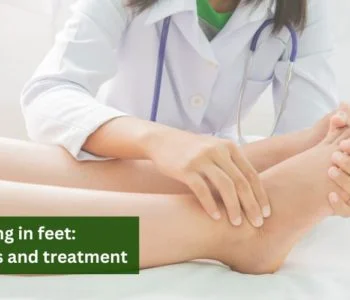The Best and Worst Shoes for Arthritis Pain
 All Blogs
All Blogs
The Best and Worst Shoes for Arthritis Pain
Arthritis and your Feet
Arthritis is a disorder that mainly affects the joints. Different types of arthritis but the three main types are osteoarthritis, rheumatoid arthritis, and psoriatic arthritis.
Even as each type progresses differently, but nonetheless all can have a painful effect on the joints of the feet.
Our feet have 52 bones, 66 joints, and more than 200 muscles, tendons, and ligaments. Crafted like high-precision instruments that connect us to the earth, support our skeleton and provide balance and mobility, our feet need very good care.
Arthritis that affects any of these 66 joints can make it difficult and painful to walk. Usually, arthritis affects the ankle, middle of the foot, & big toe.
Feet are often neglected and even abused by forcing them into footwear that doesn’t fit or that compromises comfort for style, or is simply the wrong shoe choice for our particular feet.
A classy pair of shoes worn for a special occasion, only to be taken off at the first possible moment, is an example of how painful a bad shoe decision can be. And this becomes even true when choosing shoes for arthritic feet.
arthritis in feet and ankles symptoms
Read more:- Difference between Osteoarthritis & Rheumatoid Arthritis
Importance of Choosing the Right Shoes for Arthritis
Choosing the right shoes for your feet is similar to eating a nutritious diet or getting regular exercise and can add up to big improvements in quality of life.
The right choice of shoes can help minimize pain and maximize your ability to get out and do things.
A wrong shoe can increase existing problems for someone with arthritis in their hips, knees, ankles, or feet.
This can in the long run cause damage and complications to many joints beyond the feet. Poor arch support or inadequate cushioning can multiply existing problems, including joint pain.
On the contrary, the right shoes for arthritis can reduce or eliminate foot pain that has a huge impact on the body’s function and mobility,
Worst Shoes for Arthritis
High Heels
Shoes with heels that are higher than two inches are defined as High heels.
Pointing high heels squeeze your toes thrusting your foot into an uncomfortable angle. They are actually bad for anyone’s arthritis in feet and ankles symptoms but damage can be extra if you have arthritis.
High heels incline to be hard on the ball and arch of the foot and add pressure which can contribute to wearing down of the joints. In fact, wearing high heels can actually damage the knee joint, contributing to osteoarthritis.
Tight Flats
We often think that as heels are not good, flat shoes might be the right choice. But the truth is that the flats aren’t great for arthritis, either.
They can be rough on your feet, especially if they are rigid and have a pointy toe.
A condition called hammertoes, in which the toes bend so they look like little hammers can be caused by regular wearing of Narrow-toed shoes.
If you must wear flats, make sure they’re flexible and provide good foot support.
Recommended Shoes for Arthritis
Low Comfortable Heels
The ideal shoe should have a thick, low heel, like a wedge. The height of the shoe should put your foot into a comfortable and natural angle without squeezing it too tight.
Ensure that the shoes have rubber soles, which act as shock absorbers & prevent you from slipping. Choosing shoes with a wide toe box gives your toes plenty of room to move around.
Stability or Athletic shoes
Stability or athletic shoes have a cushioned midsole and heel to prevent the foot from rolling inward, which is important for anyone with arthritis in their knees, ankles, hips, or feet and they act as a shock absorber.
They take the weight off the ball of the foot, which reduces pressure. They also help keep the foot in a neutral position.
This is especially important for people with Osteoarthritis of the knee as it reduces pressure and stress on the knee joint.
Stability shoes also provide good cushioning and motion control for the people whose feet roll unevenly.
Flip-Flops
The right pair of flip-flops can help relieve pain but always choose flip-flops that have a stable footbed and excellent arch support. Wearing flip-flops creates less pressure on the knee, as compared to clogs and sneakers.
Bottom line
It is pertinent to point out that no one type of shoe works for any one type of foot problem. Dealing with foot and ankle pain is not easy.
Wearing the right shoes can play a big role in healing the pain and can have immense benefits in the long run. Contact your doctor to guide you on the best shoes for your feet and lifestyle.









